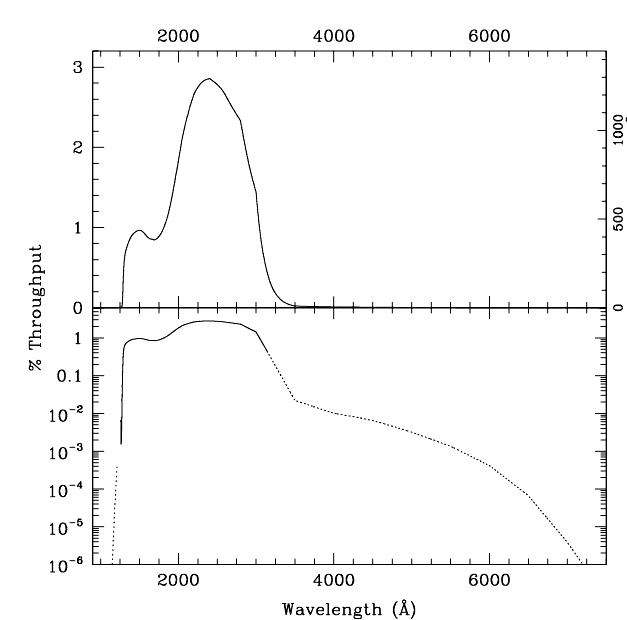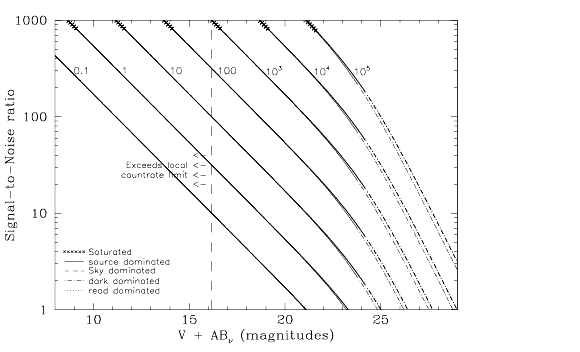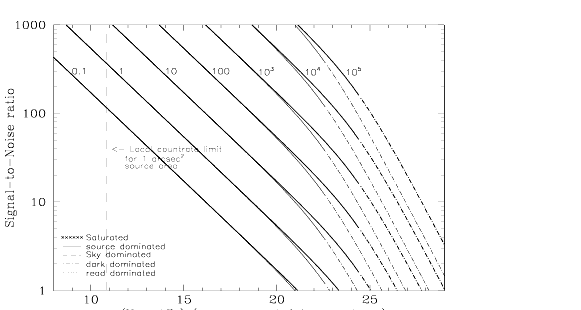 (Å)
(Å)



The F25SRF2 filter with the NUV-MAMA provides high-throughput broad-band near-UV imaging with better rejection of geocoronal emission than the F25MAMA but worse than or F25QTZ modes. It provides the same field of view and high spatial resolution.
This filter has slightly higher throughput than F25QTZ, but lets in geocoronal OI 1302 Å. In most cases the sky background will still be lower than the detector background.
Sky background on the day side of the orbit contains a significant contributions from OII air glow emission at 2470 Å and OI air glow at 1302 Å. In high-background conditions, the sky background can dominate the detector background. In average day-side observing conditions about half the background will be from the sky and half from detector dark current. Also, the background through F25SRF2 will be about 10% higher than through F25QTZ. Observers can limit the background by using the DARKTIME special requirement.
Users should also consider whether the ACS HRC with the F220W or the F250W filter might be a better choice for their science goals.
| Pivot  (Å) (Å) |
FWHM (Å) |
AB mag zeropoint |
Speak |
B  |
R80 (arcsec) |
Flux in central pixel |
|---|---|---|---|---|---|---|
| 2299.3 |
1127.7 |
23.915 |
1.59e+14 |
1126.5 |
0.32 |
8% |

 for the F25SRF2 NUV-MAMA mode. Top curves are for DARKTIME. Bottom curves are for average sky. Curves are labeled by required exposure time (sec).
for the F25SRF2 NUV-MAMA mode. Top curves are for DARKTIME. Bottom curves are for average sky. Curves are labeled by required exposure time (sec).
 for the F25SRF2 NUV-MAMA mode. Top curves are for an area of 0.2 arcsec2; bottom curves are for 1 arcsec2. Average sky assumed. Curves are labeled by required exposure time (sec).
for the F25SRF2 NUV-MAMA mode. Top curves are for an area of 0.2 arcsec2; bottom curves are for 1 arcsec2. Average sky assumed. Curves are labeled by required exposure time (sec).


|
Space Telescope Science Institute http://www.stsci.edu Voice: (410) 338-1082 help@stsci.edu |